Depth of field (DOF) is the distance between the nearest and farthest objects in a scene that appear acceptably sharp in an image. Although a lens can precisely focus at only one distance at a time, the decrease in sharpness is gradual on each side of the focused distance, so that within the DOF, the unsharpness is imperceptible under normal viewing conditions. There are three variables that affect DOF, the size of the aperture, the distance to the object and what lens you’re using. A higher f-number (smaller aperture) will give you focus over a longer distance. The closer you are to the object the shorter the depth of field. A wide-angle lens has a much greater DOF than a telephoto lens.
Awareness of these factors is helpful to ensure a good photo is not spoiled by misplaced lack of focus. Landscape photography, for example should be well focused through the entire depth of the scene. Failure to achieve sharp focus in the foreground, as a case in point can spoil an otherwise great landscape.. Landscape photographers normally rely on wide angles and small apertures to achieve the desired focus. Portrait photographers on the other hand, seek to de-emphasize (blur) the picture’s background by using a very shallow depth-of field. This is usually accomplished by use of a large aperture and proximity to their subject. Good portraits can also be taken using a telephoto lens.
In today’s blog, I want to illustrate a few examples of how depth of field can be used to advantage to better express the purpose of the picture. The variables that affect DOF can be applied creatively to make a picture more interesting.
My first example is an autumn scene, featuring the leaves of an aspen tree. I’ve used a shallow depth of field, focusing on the leaves in the foreground. The background is de-emphasized but not to the point of making it indistinguishable. It’s evident that the photo was taken in an aspen grove and I’ve incorporated two strong elements of visual design, the vertical line created by the tree trunk and the diagonal slope of the hillside. Yet, there’s no doubt that the picture is about the leaves and branches in the foreground. The eye is drawn inexorably to them because they are so sharp and detailed relative to the background. I took the photo with a 70-200 mm lens with the focal length at 200 mm and the aperture at f5.6. I used a combination of a large aperture and a telephoto lens to get the degree of background blur I wanted.
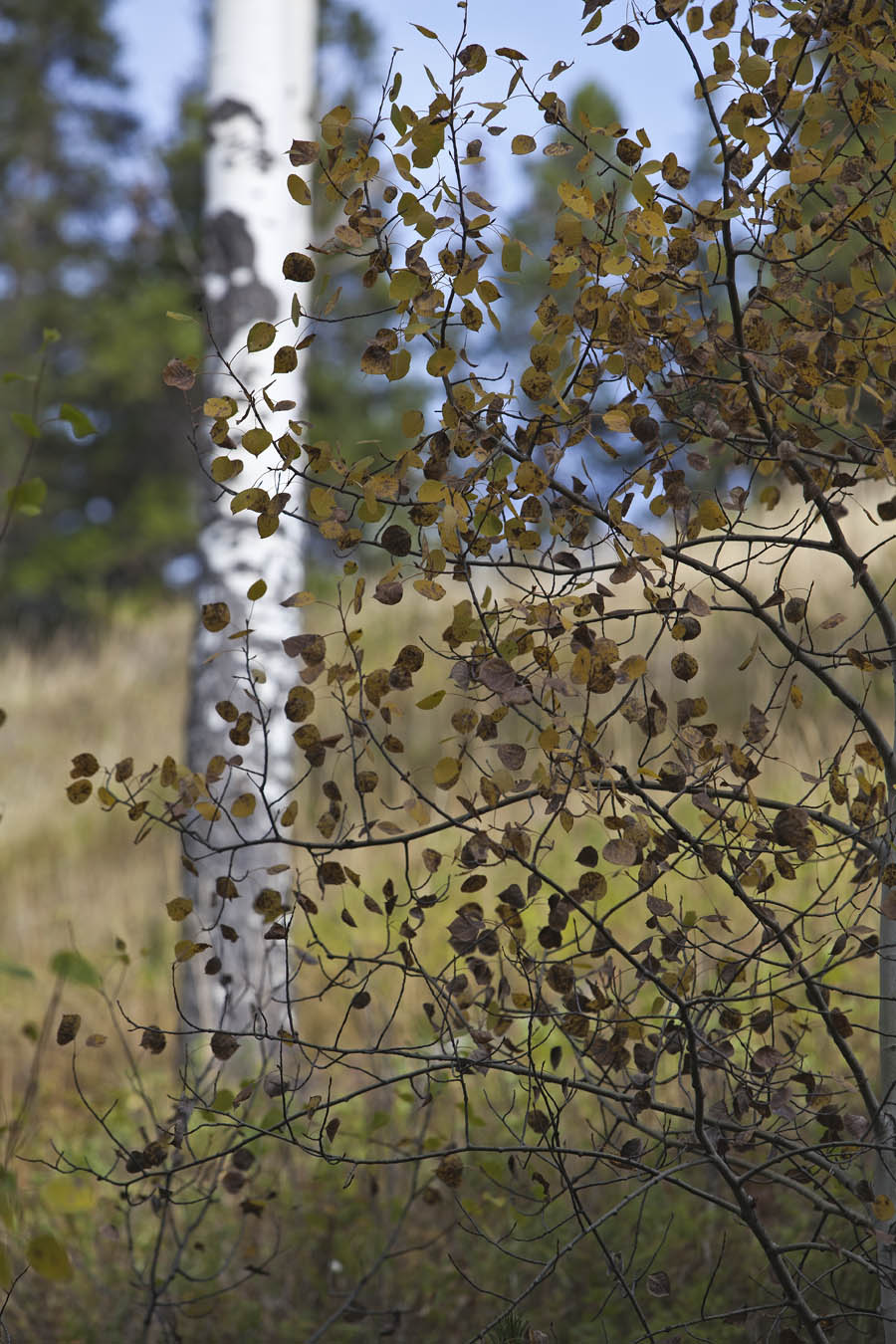
My next picture illustrates the gradual loss of focus as the eye follows the roadside barrier into the distance. I focused the camera on the barrier very close to me and as you can see, that part of the image is very sharp. Focus is noticeably diminished within 5 metres (~20 feet), indicating that the depth of field is not very great. Surprisingly, I took the picture with a small aperture setting (f16), but was able to achieve a rapid decline in focus using the same 70-200m lens at a focal length of 70 mm. In this case, it’s the longer focal length that’s contributing to the shallower depth of field. A wide angle lens would have given a much greater DOF at f16. If I did my job well, your eye should be initially drawn to the detail in the foreground (texture of the concrete, the lichen on the barrier) before following the serpentine path of the barrier into the background.
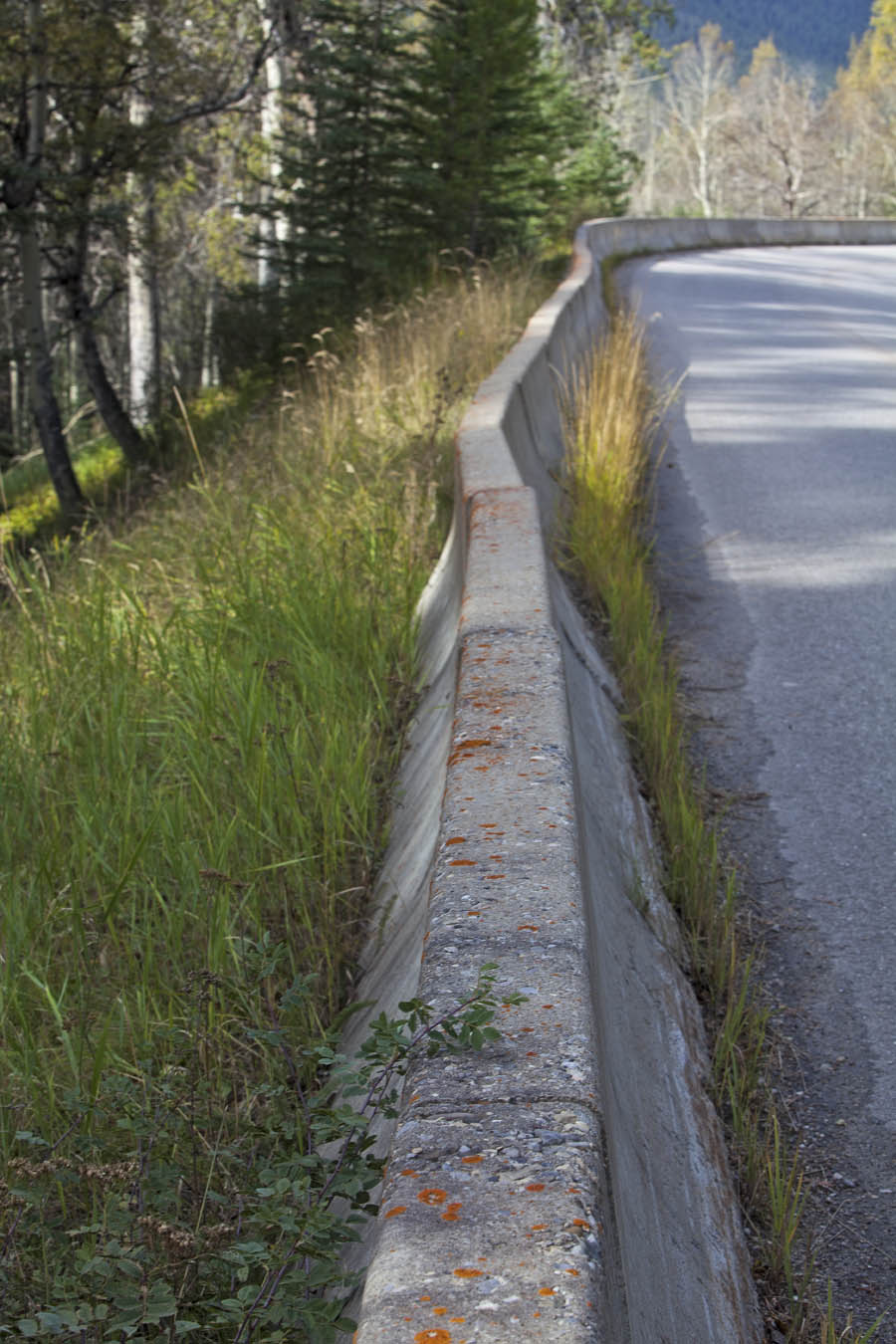
In this next picture, my intent was to blur the background beyond interest. The eye is drawn to the grasses in the foreground which stand out very well against the featureless background. I want the viewer’s attention on the colour and texture of the wild grasses in the foreground only. The more extreme blur in this picture was achieved using a telephoto lens at 200 mm focal length and a relatively large aperture, f6.3.
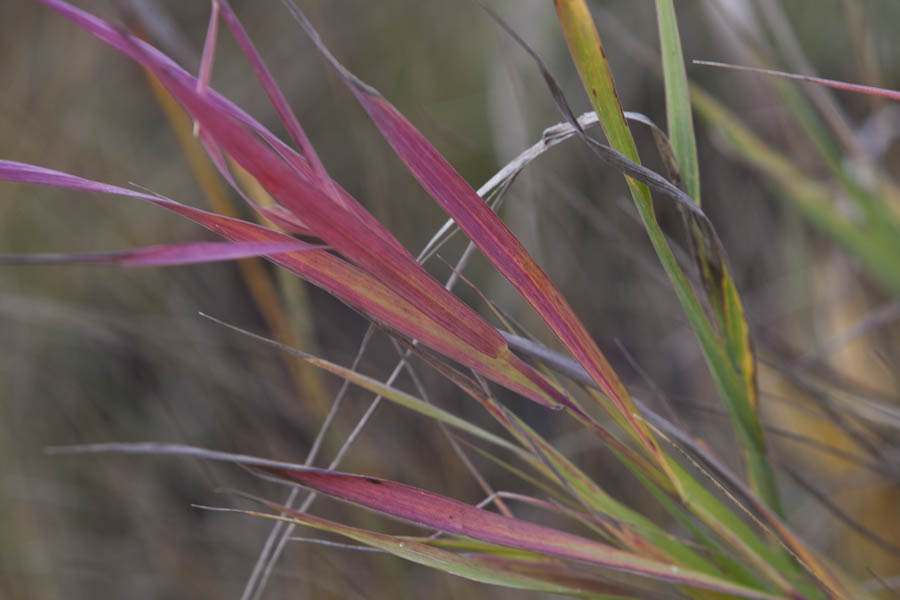
I really like this next photograph, a close-up of the needles of a blue spruce tree. The depth of field is very shallow, probably less than 50 cm (20 inches). You can see that the needles in the left foreground are out of focus (not really what I was after) and that the focus of the background falls off very dramatically. The viewer’s attention is drawn to the sharply focused needles in the plane just beyond the immediate foreground, where you can clearly see the details of their shape and colour. I used an 18-200 mm lens, set to a focal length of 90 mm. That combined with a relatively large aperture, f5.6 and my proximity to the subject created the very shallow depth of field.
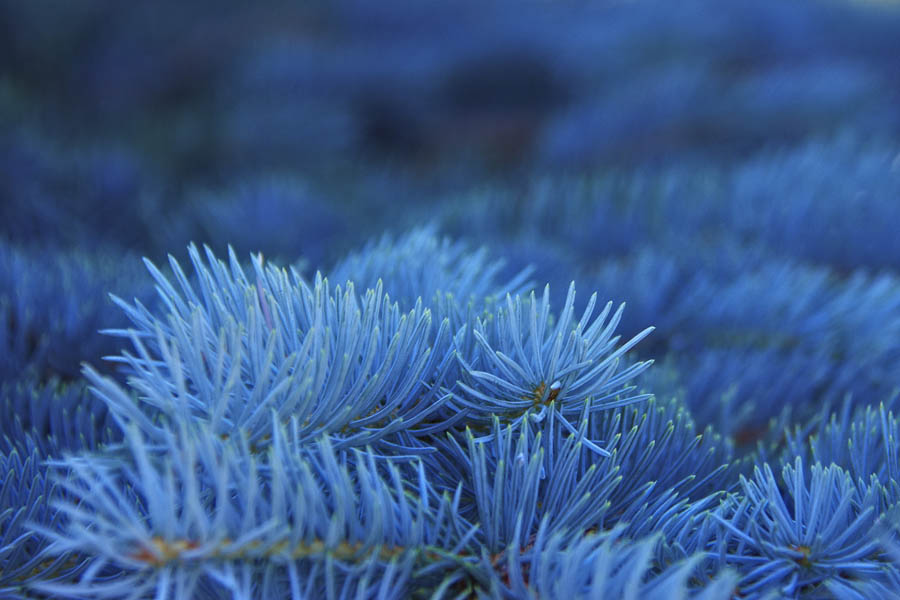
Today’s last picture was staged on our dining room table. I waited until after dark to better control the lighting. I used very little ambient light so the exposure was long (13 sec.) and the light very warm . Given this lengthy exposure, I had time to shine a flashlight on the wine glasses to highlight the facets of their cut surfaces. My intent was to focus the middle of the scene with sharpness declining into the foreground and into the background. I used a wider angle lens, 24-70 mm with the focal length set at 48 mm. The aperture setting of f5.6 gave me the result I wanted. I focused on the plate and you can see that the glasses in the foreground become less focused toward the front of the image. As you go back beyond the plate, focus also diminishes although it is less noticeable. You can see that the plate is sharper than the background beyond the railing. This shot required some planning, some experimentation and several tries to get it the way I wanted. I like the combination of soft light and the gradual softening of the image as you move forward and back of the point of focus.
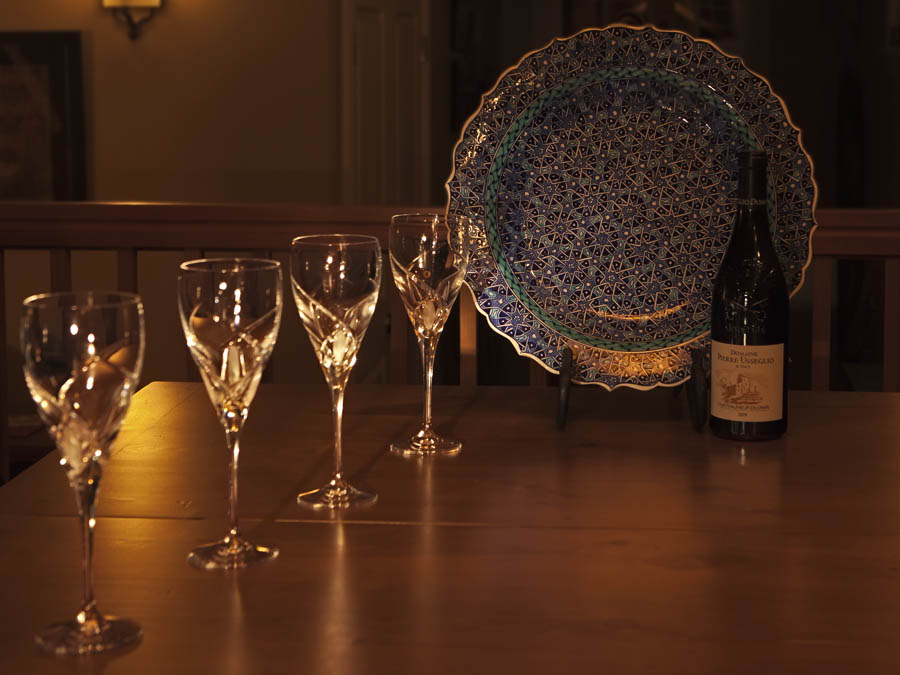

Very artistic pics!
Love the aspen leaves and the grasses.
Nancy